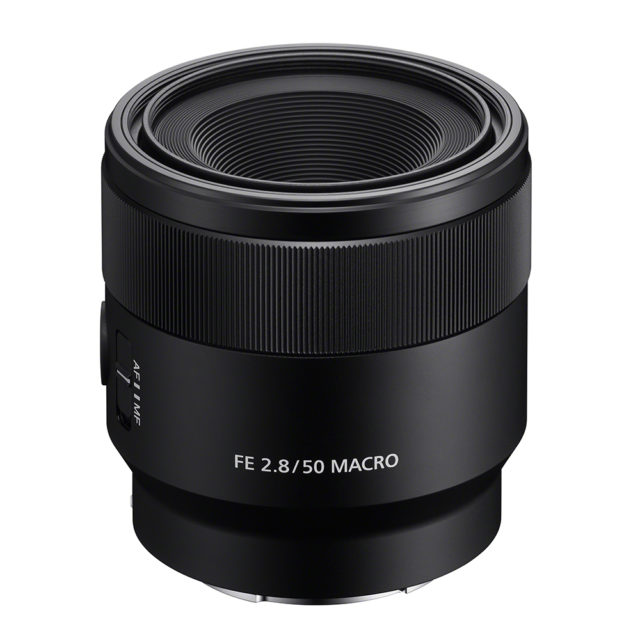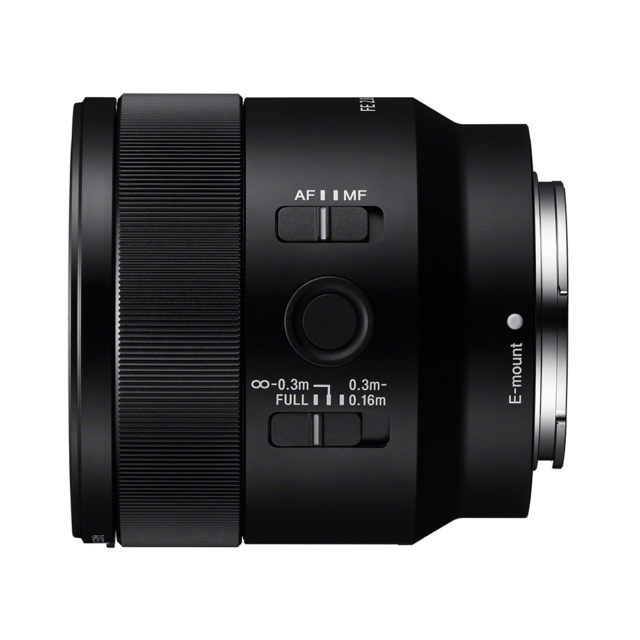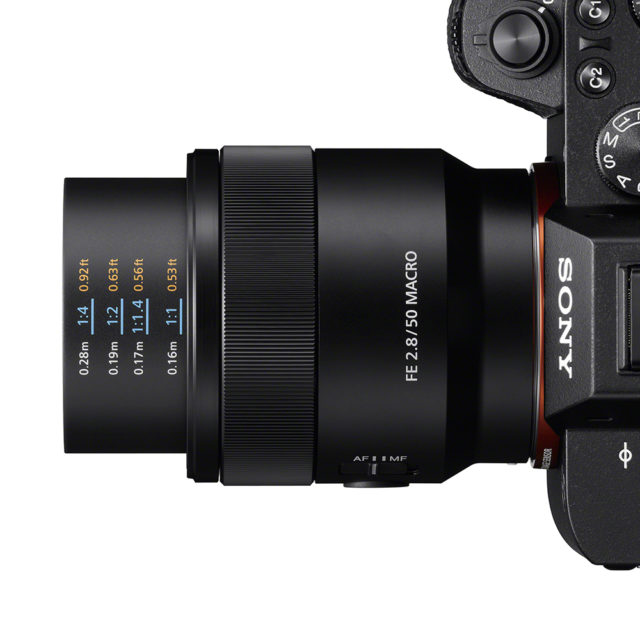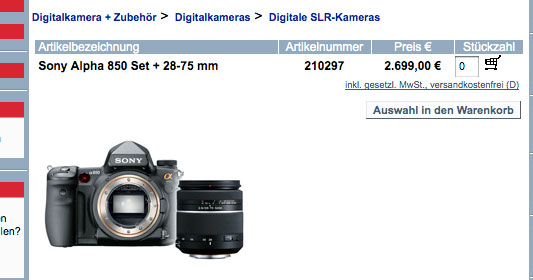Most Japanese camera companies have divisions, groups, and teams right down to the very last individual product. Even a single lens design may have its own small team, from R&D and design down to final assembly. What we are seeing happen in Sony right now is the result of complex competition and collaboration between several teams.
Take, for example, the new Sony 300mm f/2.8 G SSM II. You might assume this lens was mainly an Alpha division product from the former Minolta heritage, but in fact it’s been redesigned to work better with NEX and also with both consumer and professional HD video cameras from APS-C through Super-35 to full frame 35mm.

SLT/SLR system users gain with improvements like Nano AR coating (similar to new coatings introduced by Sigma, Nikon, Pentax and Canon), better MF control, and a better degree of weathersealing. It’s the complete update of the SSM motor (is it SSM II, or entire lens version II?) which provides compatibility with on-sensor PDAF and enhances CDAF, to offer the prospect of object-tracking AF during video. At £6,700 UK it needs to show major benefits to compete in the still field, but may have a market all to itself when fitted to the new NEX-VG900E full frame video camera.
It’s easy to think – ‘the first ever full frame video cam!’ but that is not the case. The Canon 5D MkII established the DSLR form as an acceptable professional video camera, and in the last three years a vast industry of shooting rigs, grips, follow focus devices, monitor screens and accessories has grown up all based on turning this video-unfriendly camera into something movie and TV crews are comfortable with.
Sony has implemented the sought-after 24 frames per second rate in all the new models just announced, not going for the European excuse of 25fps being close enough. This is to allow a so-called cinematic look, despite the fact that the movie industry has been trying to get away from 24fps just the same way as it threw off the shackles of 16 or 18fps many years before. Users want it, so they have at last provided it.
From the very start of reviewing HD capable cameras, we have emphasised the issues with audio – the *absolute* not optional need for audio fixed or adjustable manual gain control. I’ve done this for years in printed magazines. So has any other writer who ever had to use a camera with auto gain and nothing else. First Nikon (basic) then Canon (full control) and now Sony show they listened, if slowly and relunctantly, to something their own audio engineers would have told them was vital not a luxury.
End result – Sony enters the mainstream for HD video shooting with the Alpha and NEX systems.
The same technologies, in terms of sensor use and implementation of optical advances linked to Phase-Detection On Sensor (which I’ll call PDOS), now apply across the entire range of Sony digital imaging products from Handycam, through Cyber-Shot, through NEX, to Alpha. The Cyber-shot range is only missing an APS-C model.
What is particularly interesting is that this divided path is a parallel path now and not a divergent one. There’s no question of one straight and narrow path leading to heaven, one broad and easy road to hell, and winding ferny way to faery. Instead we get a four-lane highway joining Sony present to Sony future, with every option to change lane if you want to overtake.
Legacy and inheritance planning
Sony acquired a lot of old Minolta tech as a dowry in the 206 marriage to the Alpha system. Now having invested that legacy they have to make sure it still has value for future generations.
And example of what this really means can be found in the PDOS restrictions of the A99. The AF-D mode won’t work with some lenses, yet. For example – the 16mm f/2.8 fisheye, the 20mm f/2.8, the 16-35mm CZ f/2.8 zoom, any Konica Minolta zoom, any old Minolta AF system lens, the 35mm f/1.4, the 85mm f/1.4 CZ and G, the 135mm f/1.8 CZ and f/2.8 STF, the 200mm f/4 Apo G Macro, the 24-105mm D, any macro lens, the 400mm f/4.5, 600mm f/4, 200mm f/2.8 or the 300mm f/2.8 G SSM (pre-II). It is not even flagged as working with the 30mm f/2.8 SAM macro, 35mm f/1.8, 50mm f/1.8, 85mm f/1.8 or the 24mm f/2 Carl Zeiss SSM ZA. Or the 70-300mm G SSM, let alone the basic 75-300mm SAL.
It will only work with the 24-70mm f/2.8 CZ, the 28-75mm f/2.8 SAM, the 50mm f/1.4 current design, the 70-200mm f/2.8 SSM, the new 300mm f/2.8 G SSM II, 70-400mm f/4-5.6 G SSM and the new 500mm f/4 G SSM. Sony’s firmware requires that the user enter the focusing range involved. This is put forward as an advantage – making the system less likely to focus on a fence instead of the view through it – but in fact it’s an integral part of PDOS. Each of the 102 focus points spread across the sensor* is not a single pixel-pair, it’s a cluster of several pixel pairs tightly grouped. There may be the minimum of three differently pitched PDOS points per location, or perhaps more, to cope with the wide range of exit pupil conditions encountered when using Alpha-mount lenes.
For any one lens, the camera will need to know the broad focus range involved (hopefully the main PDAF array will normally provide this), the aperture at which focusing is taking place, and some further information about how the zoom or lens design influences the exit ray cone. From this, it will select the correct PDOS configuration and I think that for some lenses only a central zone will be active.
Sony states that firmware updates will add further lenses, but this technology only requires some relatively simple information based on the optical design. If they could have added more lenses from the start, they would have. Watch this space, because it may remain more of an empty space than you hope for.
* Sony imply that the PDOS area is large – actually it’s about 13mm square, within the APS-C zone, and does not extend towards the ends of the full frame much further than the cluster of regular PDAF points. These seem to be the same module as the A77, giving the A99 an AF ‘zone’ much smaller relative to its frame.
Zones and maps
The Alpha 99 also introduces something which almost has to happen if any of the above is going to work at all. Anti-aliasing filters do not have an even effect on sensors, especially full frame with wider angle lenses where the rear nodal point of the lens is relatively close. Geometry means that light passes through them at more of an angle towards the edges and corners, and there is therefore more distance between AA filter and sensor surface. With an AA filter having a single value diffraction-created diffusion of the image-forming light (aka blurring), the effect gets stronger as you move away from the centre (axis).
Since most lenses are also sharper in the centre and typical sensor microlenses are not ‘tuned’ from centre to edge, the overall result is to emphasise fall-off from centre to edge. Secondary results include a dramatic tendency for bright sources imaged in the extreme corners to have a strong, directional, surrounding glare. This is boosted by internal multiple reflection between the sensor surface and the inner face of the AA filter, especially if the incident rays are at 40° or less to the focal plane (where on-axis rays are described as being at 90°).
The best solution to this is the classic one – what Olympus called telecentric lens design, where you do your best to project the image on to the sensor from a relatively distant position keeping all rays, centre to edge, as close to 90° as possible. But that calls for new lens designs and also restricts the optical formulae, tending to produce much larger heavier lenses. It’s very practical on one-inch or smaller sensors, OK on MicroFourThirds, feasible for NEX but not much an option for a full-frame coverage.
So, Sony has introduced an AA filter which they describe as ‘multi-segment lo-pass’. It’s not one strength across the entire frame, but divided or graded to optimise performance towards the corners. At the same time, they have introduced a similar zoning to noise reduction, which we assume to mean the NR applies to the raw output before a raw file is saved. Combined with the usual sensor mapping, and lens profile based vignetting compensation, the overall effect of these refinements should be to:
- Even out the apparent resolution and image acutance across the frame
- Reduce the mapped peripheral gain effect, under which images appear to be noisier at the edges unless natural vignetting is allowed to be present
- Remove artefacts such as corner streaking or softening, and fringes or flare from light sources towards the extremes
No doubt this is also combined with the detailed ‘repair’ function used to deal with PDOS. More on this later, as there’s an implication that the PDOS on the A99 is not the same as that on the NEX-5R or NEX-6, and may use a second layer of pixels leaving all 24.3 megapixels of the imaging layer untouched.
The area-specific NR is probably essential to achieve the high ISO range at 14-bit conversion, though it’s not unusual for cameras at this level which claim 14-bit conversion to have a variable true bit depth depending on ISO, image style and exposure conditions. We can assume that 14-bit will only be fully utilised under ideal conditions at ISO 100.
Exactly how Sony has managed to adjust AA values in ‘segments’ without visible transitions, we’ll have to find out. The same goes for NR.
The missing NEX-9
There is one camera absent from the September 12th launch – the 24 megapixel full frame NEX-9. The appearance of the HD video Handycam, NEX-VG900E, indicates that the model name for the full frame 24 megapixel NEX will be NEX-9. Images of the VG900 show it using an Alpha via the standard LA-EA2 adaptor, and we can be sure that this and not a special range of E-mount full frame lenses (almost pointless) will be how the NEX-9 takes A-mount glass.
In the meantime, the NEX-6 appears to be perfectly pitched in price, but see my comment below about GPS.
The missing GPS
While the A99 has GPS, we’re still left with no NEX model yet featuring GPS despite these being the ideal travel and walking companion. Nor is there a current SLT model with 16 megapixels and GPS, as the Alpha 55 replacement doesn’t have it and the ‘baby’ A77, the A65, is a 24 megapixel again. The Cyber-shot RX100 and RX1 models also don’t have GPS. Whether or not the new hot shoe will allow an add-on GPS remains to be seen.
The new 50mm f/1.4 SSM Carl Zeiss T* Planar
Whatever you think of Minolta glass, or new Sony glass, the Carl Zeiss name on a lens is a huge draw. Reactions to the otherwise rather pedestrian DSC-RX1 prove this. People will put up with being back in 1972 – the era of cameras like the Minolta Hi-Matics with fixed 40mm f/1.7 and similar Gauss design lenses of very high quality – if only it means getting rid of poor quality digital images. There was a time when you couldn’t sell a 50mm standard lens with a camera, and there was a time before that when every system was judged initially on the quality of its 50mm choices. We may be returning to that way of thinking.
Edit – at the 2006 launch of the Alpha 100, a 50mm f/1.4 CZ was briefly shown in Paul Genge’s presentation to UK/English language journalists. I did not report on this as none of the literature confirmed what we saw on the Powerpoint screen. I believe this lens has been planned for six years.
Flash
The new HVL-F60AM flash with rather weak video light and new hot shoe might seem an annoying departure, but remember, the A99 has no built-in flash and thus can not control wireless remotes without a commander. No HVL-F20AM style mini flash has been previewed, so the F60AM is the only commander. But your old flash will work fine off-camera controlled by your new one.
Parked on the hard shoulder
So, having looked at the four way road map for Sony, I must confess that I’m pulling into a rest area for a while. I did not sell my Alpha 900 or Alpha 77, and I’m glad I didn’t. Nor did I sell my 24mm f/2 even though it has been little used for a few months. It has been waiting for a 36 megapixel full-framer, which makes a 24mm a much better all-round lens because of the croppable image size.
I’m not one of those photographers obsessed by bokeh or the need to throw parts of my picture into extreme defocus. At 24 megapixels, APS-C is already seriously short of depth of field even at optimum apertures like f/9. I’m more likely to spend my money on a Samyang 24mm f/3.5 full frame tilt-shift lens to use with both the A900 and A77 than to invest in an A99. I have no use for a revised 300mm f/2.8, especially on full frame where it seems to me now to be a very conservative focal length, and though I’m sure a 50mm CZ will be wonderful I have no complaints about my Minolta-design Sony 50mm f/1.4. I do shoot video, but rarely in conditions which demand that I use full frame, and if Sony don’t put manual audio control into older models via a firmware fix, I’ll just buy a Canon 600D.
The price of the Alpha 99 is not as bad as people suggest, with UK stories launching it at £2082+VAT, or $3200. But I’ve got a very good quality pure still camera in the Alpha 900, with effectively noise-free imaging from ISO 100 to 320, excellent battery life and exactly the same maximum image size offered by the 99.
I think I’m in the market for the NEX-6 body but I do not care in the slightest about the WiFi aspect, or the downloadable apps. If the new remote control can actually trigger and end video shooting with the A77, NEX-5n (etc) I’ll definitely buy one. The RX1 is not for me either – had it been fitted with a 17mm, 20mm or even a conservative 24mm then it would have followed in the footsteps of the great wide-angle cameras I have worked with over the years from the Brooks Veriwide through the Plaubel 55W to Hasselblad SWC and Fujfilm G645SW. I would not even mind a separate optical finder for that, much; I was used to it!
Things we forget
The industry has put a huge effort into autofocus solutions ideal for interchangeable lenses and zooms, and apparently set aside the idea of external AF modules for good. With a fixed lens like the RX1, an AF module not working through the camera lens itself is a practical idea and could be far faster. We have also forgotten about those twin-lens compacts, with a switch to go from 35mm to 65mm (or whatever). Small sensor sizes, new lens design and ideas could make that concept work again.
The story of development for all types of camera is not over as there are old ideas to be revisited, and new ideas yet to come.
See B&H news on all the latest Sony stuff
– David Kilpatrick







